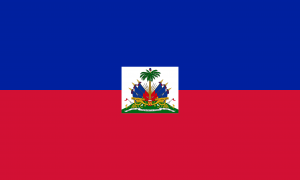Language/Haitian/Grammar/Plural-of-Nouns
| ◀️ Gender of Nouns — Previous Lesson | Next Lesson — Definite and Indefinite Articles ▶️ |
Introduction[edit | edit source]
In this lesson, we will delve into the topic of forming the plural of nouns in Haitian. Understanding how to form plurals is essential for building your vocabulary and communicating effectively in Haitian. We will explore the rules for pluralizing nouns and provide numerous examples to help you grasp the concept. Additionally, we will discuss any regional variations in the usage of plurals and share interesting cultural facts related to this topic.
Plural of Nouns[edit | edit source]
In Haitian, forming the plural of nouns is generally straightforward. Most nouns are pluralized by adding the suffix "- yo" to the singular form. Let's look at some examples:
| Haitian | Pronunciation | English |
|---|---|---|
| jennou | zhe-nu | hand |
| jennou yo | zhe-nu yo | hands |
| kay | kai | house |
| kay yo | kai yo | houses |
| timoun | tee-moon | child |
| timoun yo | tee-moon yo | children |
As you can see from the examples above, the singular form of the noun is simply followed by the plural marker "- yo" to indicate the plural form. This is the most common way to form plurals in Haitian.
However, there are some nouns that undergo changes in their spelling when forming the plural. Let's take a look at a few examples:
| Haitian | Pronunciation | English |
|---|---|---|
| pitit | pee-teet | child |
| pitit yo | pee-teet yo | children |
| zwazo | zwa-zoh | bird |
| zwazo yo | zwa-zoh yo | birds |
| fanmi | fah-mee | family |
| fanmi yo | fah-mee yo | families |
In these examples, you can see that the singular noun undergoes a change in its spelling in the plural form. This is something to be aware of when learning Haitian nouns.
It's important to note that not all nouns in Haitian follow the same rules for pluralization. Some nouns have irregular plural forms or unique ways of forming plurals. Let's explore some of these exceptions:
| Haitian | Pronunciation | English |
|---|---|---|
| moun | moohn | person |
| moun yo | moohn yo | people |
| zanmi | zan-mee | friend |
| zanmi yo | zan-mee yo | friends |
| kouto | koo-toh | knife |
| kouto yo | koo-toh yo | knives |
In these examples, you can see that the plural forms of these nouns do not follow the standard pattern of adding "- yo" to the singular form. It's important to learn these irregular plural forms as you encounter them in your studies.
Regional Variations and Cultural Insights[edit | edit source]
While the basic rules for pluralizing nouns in Haitian are fairly consistent across regions, there may be some variations in usage or understanding. For example, in some regions, the plural marker "- yo" may be omitted in informal speech or in certain contexts. This is similar to how we might say "three apple" instead of "three apples" in English in certain situations.
Additionally, it's interesting to note that Haitian Creole has been heavily influenced by French, and this is reflected in the pluralization of nouns. Many Haitian nouns have borrowed their plural forms directly from French. For example, the word "papye" (paper) becomes "papye yo" in Haitian Creole, following the French pattern of adding "-s" to form plurals.
Understanding these regional variations and the historical influences on the Haitian language can enrich your learning experience and deepen your understanding of Haitian culture.
Practice Exercises[edit | edit source]
Now that we have explored the rules and variations for pluralizing nouns in Haitian, let's put our knowledge into practice with some exercises.
Exercise 1: Pluralize the following nouns:
- timoun (child)
- liv (book)
- kouto (knife)
- zanmi (friend)
- fanmi (family)
Solution:
- timoun yo (children)
- liv yo (books)
- kouto yo (knives)
- zanmi yo (friends)
- fanmi yo (families)
Exercise 2: Identify the irregular plural forms of the following nouns:
- moun (person)
- zwazo (bird)
- kouto (knife)
Solution:
- moun yo (people)
- zwazo yo (birds)
- kouto yo (knives)
By practicing these exercises, you will become more comfortable with pluralizing nouns in Haitian and reinforce your understanding of the rules and exceptions.
Conclusion[edit | edit source]
In this lesson, we have explored the topic of forming the plural of nouns in Haitian. We have learned that most nouns are pluralized by adding the suffix "- yo" to the singular form, but there are also exceptions and irregular plural forms to be aware of. We have also discussed regional variations in the usage of plurals and the historical influences on the Haitian language.
By mastering the pluralization of nouns, you will greatly expand your vocabulary and be able to communicate more effectively in Haitian. Practice what you have learned and continue to explore the rich and diverse world of the Haitian language.
Sources[edit | edit source]
- Haitian Creole - Wikipedia
- Haitian Creole Plural - CreoleTutors.com can help - Creole Tutors ...
- Haitian Plural
Other Lessons[edit | edit source]
- Questions
- Agreement of Adjectives
- Interrogative Form of Verbs
- Give your Opinion
- Negation of Verbs
- Verb Conjugation Present
- Word Order in Simple Sentences
- Possessive Pronouns
- How to Use Have
- Future Tense Future Actions
| ◀️ Gender of Nouns — Previous Lesson | Next Lesson — Definite and Indefinite Articles ▶️ |

